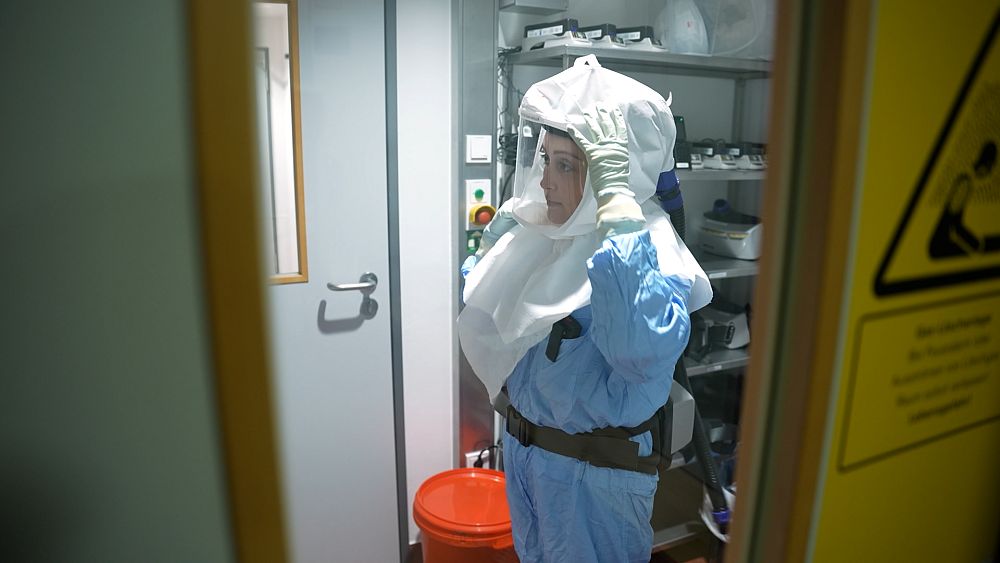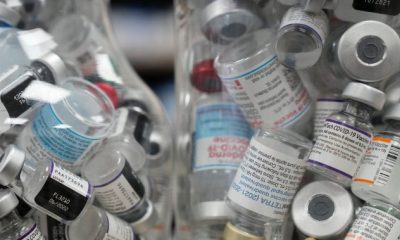General News
Preventing the next pandemic: The EU project funding research into infectious diseases

In this episode of Smart Regions, we find out how the European PerForM-REACT project is helping two German research institutes in their quest to better understand and more effectively deal with infectious diseases.
For some, the COVID-19 pandemic might seem like a distant memory. But the virus still lives among us.
What will cause the next pandemic? And how can we be prepared to deal with it more effectively? A European project is dedicated to answering these very questions.
Two research institutes, in Munich and Augsburg in Germany, use cutting-edge technology to understand how viruses work as the risk of another pandemic remains very real.
“The next pandemic will come for sure. And it will most probably be another one that is transmitted by aerosols (fine solid particles or liquid droplets in air),” explained Claudia Traidl-Hoffmann, the director at the University of Augsburg’s Institute of Environmental Medicine and director of the Institute of Environmental Medicine of the Helmholtz Centre in Munich.
“What we try now to set up is sentinels, also to understand how virus particles are dispersed in rooms, in aeroplanes, in buses. So, for the next pandemic, we don’t want to shut down life. Life should go on,” she added.
How is the EU supporting research into infectious diseases?
COVID-19 has caused more than 6.9 million deaths and infected more than 771 million people worldwide, according to the World Health Organisation.
The Institute of Environmental Medicine (IEM) at the Helmholtz Centre in Munich has acquired high-tech equipment thanks to the European PerForM-REACT project. Its main objective is the early detection of disease progression.
“There are certain groups of viruses such as coronaviruses or flaviviruses (transmitted by mosquitoes), which are on very strict surveillance, and we now have the tools and also the communication platforms to be better prepared and be aware of alarm bells which might ring,” said Gregor Ebert, the group leader and head of BSL-3, Helmholtz Munich.
They have a level 3 biosecurity laboratory with sealed entry locks, negative pressure rooms, and a thermal virus inactivation system. They also use a microscope to study viruses at the molecular level.
“We are looking at whether SARS-CoV-2 can infect different cell types and different parts of these 3D cell system models,” said Dan Kaemena, a molecular geneticist.
The results of their research are shared with the laboratory at Augsburg Clinical University, which is associated with the project. Here they are studying the interactions between different viruses and the effect of climate change, pollen or pollution on their spread.
Where does the money come from?
The total budget for this project, covering the two studies, is €18.5 million. PerForM-REACT has been fully funded by the European Union’s Cohesion Policy. Of the total €18.5 million, roughly €4 million was dedicated to the Augsburg Clinical University to purchase instruments and equipment, for instance.
The EU funds used come from the Next Generation EU recovery fund. An important instrument of this is the “Recovery Assistance for Cohesion and the Territories of Europe” (REACT-EU) under the EU Structural Funds. Its purpose is to support Member States in combating the economic and social consequences of the coronavirus pandemic and in the transition to future-oriented and sustainable economic structures.
Research is progressing by leaps and bounds. PhD student Corinna Holetschech is working with a robot that can predict whether an infection will be severe or not, even in a positive but asymptomatic patient.
“With this, we can predict the course of the infection. So hopefully somewhere in the future, if you go to a test centre and you get a positive test, you could already get this predictive test and then they could send you to a doctor right away, they could send you to the hospital to get monitored to hopefully prevent a severe course,” she told Smart Regions.
Source
Disclaimer: No copyright infringement intended. All rights and credits reserved to respective owner(s).
























